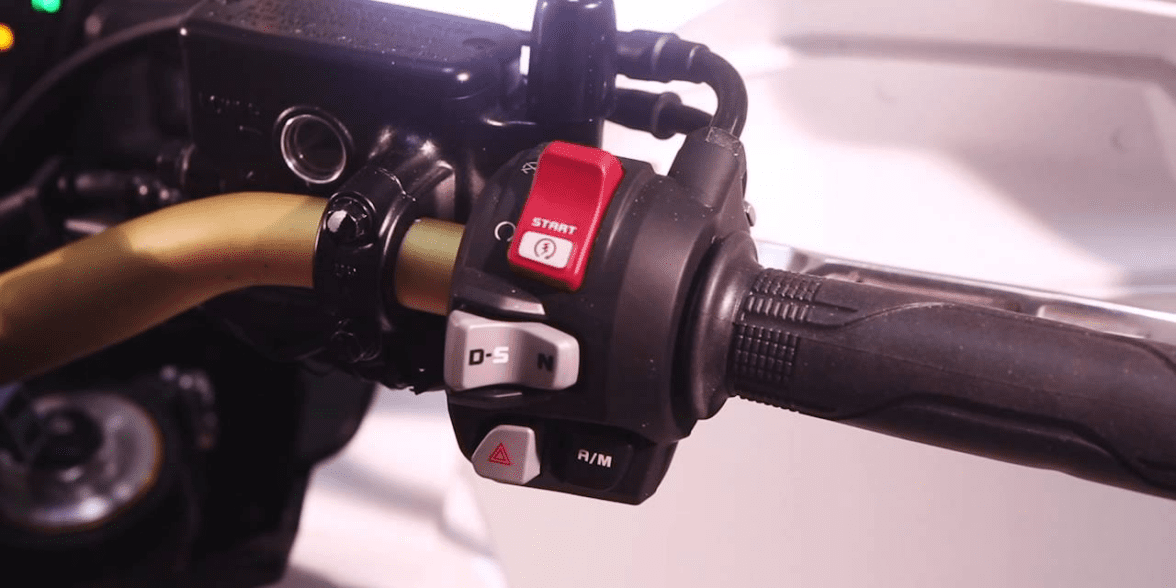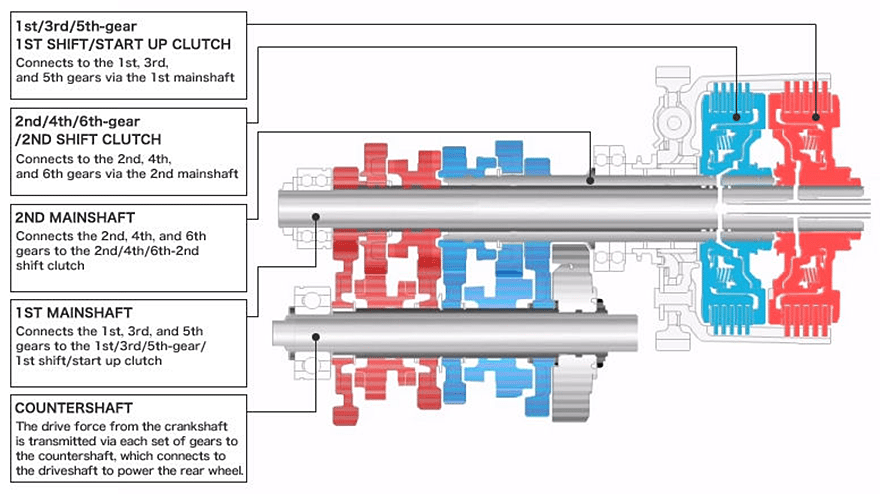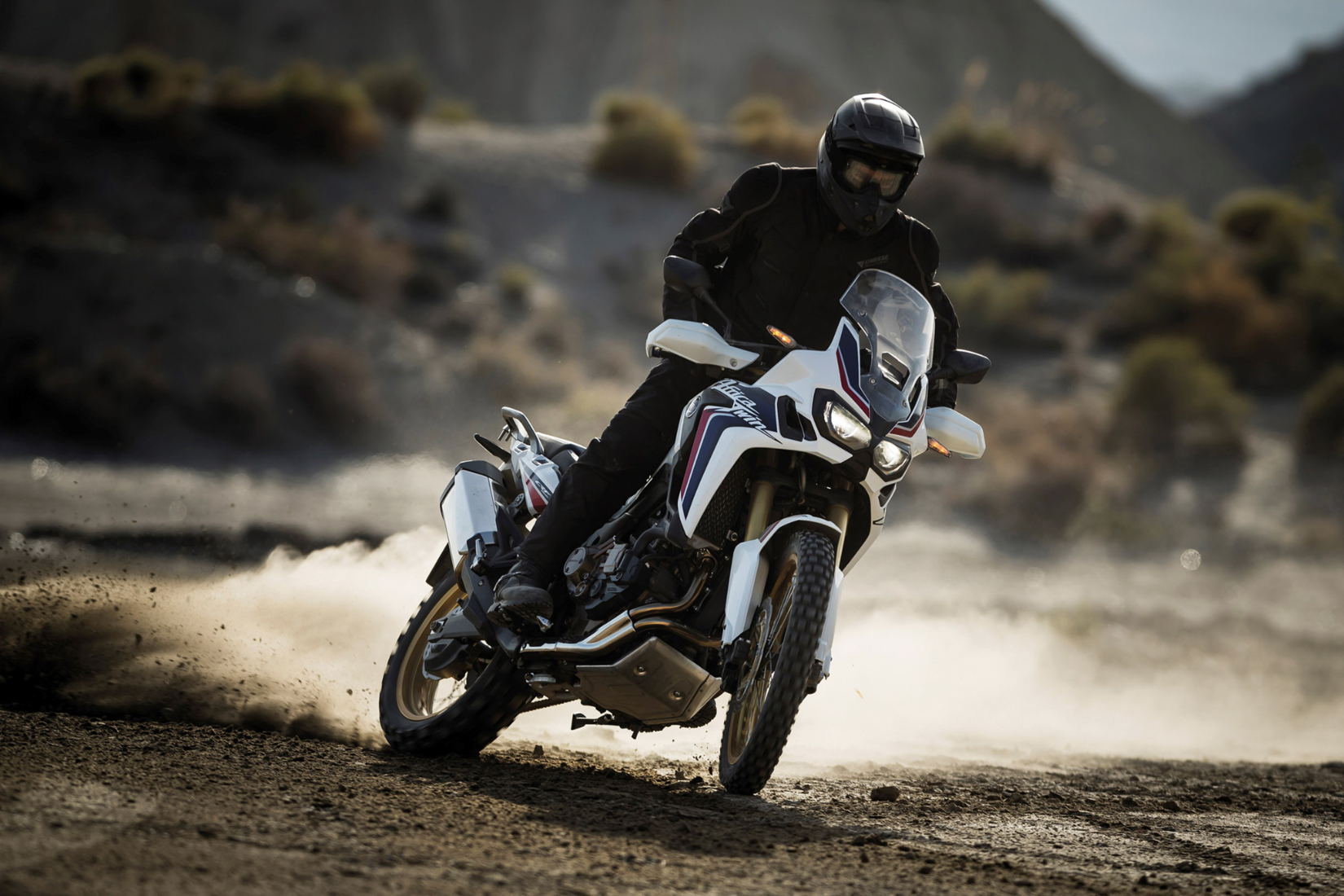I’ve begun noticing that there’s nothing more controversial in the world of new motorcycles right now than the growing number of different “automatic” transmissions being rolled out to consumers by manufacturers.
If you’re in the dark about what I’m referring to as an automatic, let me clarify. Motorcycle automatic transmissions are different than the ones found in the world of cars. They don’t have torque converters, anywhere near the bulk and weight and in reality are a whole different ball of wax.
There are Continuously Variable Transmissions (CVT) which have made the leap from the world of scooters to regular motorcycles on machines like Aprilia’s Mana GT.
There are electric motorcycles from companies like Zero which have no actual transmission to speak of, but an electric motor instead.
Then there are Honda’s Dual Clutch Transmissions (DCT) which are a cut above the rest… including regular manual transmissions when it comes to overall performance.
Why are DCTs are better? They perform faster and allow the rider to concentrate on more important things than shifting, like cornering, braking, dodging obstacles, other drivers or just enjoying the view of insects slamming into the windshield.
Not only are they better and safer as such, they’re not going away and likely are going to drag all of us kicking and screaming into the future of motorcycle transmissions.
DCT bikes are superior to the electrics because they don’t suffer from limited range before needing a recharge and don’t need a drive belt like in the CVT system.
DCT is more correctly described as a semi-automatic in reality. There aren’t any deliberate shifts in gear ratios in the aforementioned true automatics while conversely there are 6 or 7 different ratios found in the DCT and two clutches used for shifting between them.
How Honda’s DCT Transmissions Work
The technology has been perfected from extensive testing and development in the world of auto racing. If you want to shift gears seamlessly up or down, faster and smoother than any human can using a clutch pedal (or even paddle shifters on a steering wheel), then you want DCT automatic mode.
Look at the image below to see the layout of the system and how it works. You can also see Honda’s explanation of how this setup works.
- There are two main shafts used to transmit power from the engine through the transmission using two separate clutches. The different gear combinations are selected by a computerized control unit using a shift motor.
- The odd numbered gears are splined to the mainshaft connected to the start up clutch.
- The even numbered gears are found on the second mainshaft controlled by a second shift clutch pack.
- The shift clutch mainshaft is hollow allowing it to ride on the outside of the start up clutch mainshaft.
This design makes the DCT compact enough to live in a motorcycle frame while only being about 10 lbs heavier than a conventional bike transmission.
The Ride
When the rider pushes the “N/D” button to the “D” side on the handlebar switch, the control unit engages first gear by moving a shift motor via solenoid instead of the rider stomping on a foot lever.
When the rider twists the throttle, pressurized oil is instantly sent to the start up clutch to engage it and so power flows out to the rear wheel.
This is done so fast that there’s no noticeable throttle lag and the bike takes off in a way to match the input from the rider’s wrist. Whack the throttle open and you’ll launch with authority. Keep it civilized and the computer reciprocates in kind.
As the bike hurtles down the road the computer monitors front and rear wheel speed and selects second gear before it’s needed in preparation for an impending upshift. It holds off engaging the second (shift) clutch until a preset rpm and wheel speed is reached.
Once there it swaps power from the start up clutch to the shift clutch and a faint “Tick” sound can be heard.
This makes the shifts basically seamless compared to the massive drop off in power experienced when a manual clutch lever is pulled in and your left foot makes the gear shift.
So it continues from there either pre-selecting the next higher gear as revs rise or going to the next lower speed if the revs and wheel speed drop off. Seeing as there are two clutches to work with it can instantly go up or down in the blink of an eye according to the rider’s needs before they even realize they need to shift.
The DCT Mentalist
I don’t want to compare the DCT to The Amazing Kreskin or Derren Brown but the system anticipates what the rider needs from it in a way that is silky smooth and optimizes fuel efficiency. If it wasn’t so helpful it might even be a bit unsettling. How can the bike be smarter than I am?
You can select a more dynamic shift pattern to match a sportier riding style if you want the computer to hold off longer before shifting to let the revs go higher.
At any time while in the automatic mode a rider can hit a plus or minus button on the left handlebar to override the system and make a shift. The system will take over again a few seconds afterwards though.
There is an optional manual mode using the aforementioned plus/minus switches to do all the shifting yourself if you prefer.
I found the DCT was in sync on road with my shifting needs about 99% of the time.
I’m not a professional racer admittedly and so I imagine more talented riders might instead opt to tickle the shifting buttons themselves for aggressive riding on road.
Off Road Winning
The DCT equipped CRF1000 Africa Twin is quite at home off the asphalt and is a good case sample to look at of how the system performs there.
Johnny Campbell is an 11 time Baja 1000 Champion and in this video compares riding over really rocky terrain with a DCT vs manual transmission. It really cuts through the fat nicely.
To me it sounds like a match made in heaven because when I ride over really rowdy terrain the constant shifting and need to slip the clutch going up hills can be a real workout for my hands.
Lots of enduro riders install Rekluse clutch kits on their dirt bikes to free themselves from the manual clutch, so why not go one better with a DCT?
In deep mud and muskeg riding I find the build up on my boots can negatively affect my ability to find the shift lever with my foot as well. Not an issue with a DCT… there is no foot lever!
You can’t stall the engine while in automatic mode which would be extremely useful and welcomed when hill climbing. Especially true when you only get halfway up the first try.
The system uses an inclinometer to detect a hill climb and pick the correct gear for it. Similarly it can choose a gear to implement engine braking when going downhill.
These are clear cut positives for DCT off roading.
Off Road Limitations?
Having said that, some experienced off road riders’ feedback about DCT isn’t all positive but even they recognize the potential of putting the DCT on a 250 lb dirt bike should Honda do that in the future instead of just on the 500+ lb Africa Twin.
The ones who like DCT use the manual mode more often over the automatic while in the rough stuff to get the shifts exactly how and when they want them without issue. It’s not a hard transition to make if you’re open minded.
The ones who don’t favour it complain that they prefer pulling in a manual clutch lever when entering a sharp turn to tackle the initial entry unloaded. Being able to dump it once pointed the way they want to go then powering through and out of the turn is what they want to do.
With a DCT you have to brake and then downshift to make the same move, so it’s not quite the same.
You can alternately do controlled powerslides with a DCT Africa Twin through a corner if you have the traction control set on the lowest setting.
Another example where the DCT is described by some as less capable comes when a rider encounters a large diameter log fallen across the trail they need to get over. You can’t pull in the clutch, rev the engine up and pop the front high up and over the log quite the way you can with a manual… or so they claim.
The riders who don’t have a problem with this on the DCT bike say it’s fine as it is with the stock sprockets while others choose to swap out the rear for a one tooth smaller design to be able to raise the front end easier.
The smaller sprocket did drop their top speed in exchange for the added torque, but not to the point they couldn’t go faster than well over 100 mph.
Still Not Sold On DCT Reliability? Too Fancy?
“Fuggettabout it”.
Honda first put DCT on the VFR1200 in the 2010 model year so this isn’t a new thing at all. They’ve already improved the first generation DCT system to make the shifts even faster while ironing out any bugs with it.
In speaking with the Honda techs at my local dealership they tell me virtually zero DCT problems have come their way with the second generation system other than a few minor oil leaks here and there.
From a maintenance perspective there is an extra filter to be replaced compared to the manual clutch system and a little more oil, but that’s it. No special extra work required.
***In addition to the VFR1200 and Africa Twin, these transmissions can be found on the Honda NC700X, NC750X and CTX700 (in the US only) along with the new for 2018 Gold Wing DCT.
I did find a couple of instances online from owners of first production year Africa Twins (2016) where after plowing through a lot of deep water while out off roading some moisture must have gotten into the handlebar switch housing and caused their bike some significant shifting problems.
Water and electronics don’t mix obviously and after replacing the switches the problems didn’t return.
One other notable issue I heard from an owner was about DCT overheating when the bike got stuck in deep mud and the rider sat spinning the rear wheel for a time before they got out. I can see how that could be a legitimate concern, but no permanent damage was done to the transmission when they were allowed to cool before continuing to get unstuck.
Several owners now have in excess of 30,000 miles on their DCT bikes over varied terrain reporting no issues with them. Au contraire, they are pleased as punch.
Honda for its part claims you’ll get the same life out of a DCT as a manual clutch transmission. That’s the kind of promise Honda usually keeps if you look at their track record.
This isn’t their first rodeo, so to speak.
“I Just Don’t Like It”
This is what’s really at the heart of the resistance to DCT and other automatics from what I can tell: habit and distrust of change.
Yes it’s true that you can’t pull in the clutch lever at a red light and “blip” the throttle to listen to your exhaust note or signal your riding buddies… well actually you can, but you have to remember to first flick the N/D button into N.
Forgetting to do that will result in your bike launching forward abruptly into the car in front of you or deep into the “tulies” if you’re off road.
I understand your trepidation and concerns.
Motorcycling has been built up in our minds as an art and skillset we all pride ourselves on having mastered. Us “two-wheeled Picassos” feel deep satisfaction when it comes to executing a perfect launch or shift.
We’ve all worked hard to hone our skills to the point of being an unconscious reflex over the years. Starting out fresh again and re-learning our craft on a DCT could be uncomfortable at first.
Letting go of personal pride and embracing this new technology could even be troubling as one might feel like they’re abandoning their motorcycle heritage in a way.
Some may even worry about not having the same amount of control over the bike at first.
Nah… you’ll catch on much faster than you think, I promise.
Allowing sentimentality to get in the way of the performance enhancement DCT offers is a bit silly when you stop and think about it rationally.
Bikes these days are LOADED with dazzling electronics and techno-whizz-bangery that really does make us better and safer if accepted and utilized correctly.
Give It A Chance
In short, we’re actually missing out not having DCT on our bikes.
I realized this when I took a 2017 Africa Twin out for a test drive back in August.
At first it was awkward when I reached for the phantom clutch lever a few times, but after 20 minutes of city riding I was totally sold on it. No cramped hands from riding in heavy traffic. It was even dare it say it… almost relaxing!
Owners tell me that it takes about 250 miles of riding to really fall in love with it.
One claimed that upon initially leaving the dealership he felt a strong urge to return the bike in exchange for a manual clutch model.
Gradually that sense of panic faded with each passing mile and after enough saddle time it all came into focus for him along with a clear epiphany: it’s actually more fun on a DCT.
If you haven’t tried one out for yourself don’t hesitate any longer.
I’m definitely looking forward to trying out a new 2018 Gold Wing DCT as soon as I can.







